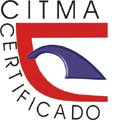Sustainable development of diamond mining in Lunda Sul
Keywords:
mining, sustainable development, STS approach, environmental impacts, mining communitiesAbstract
This research addresses diamond mining in Lunda Sur from the perspective of science, technology, society (STS) with the purpose of carrying out an analysis of the challenges and perspectives that this activity presents to achieve sustainable development. The research carried out from the qualitative paradigm is exploratory, entering a very little researched field with the intention of offering a different vision of the relationship between the exploitation of the mine of the Catoca Mining Company Lda. (SMC), the environment and the communities. Being a research that delves into a world of asymmetries and relationships of deep strategic complexity for the country, the results shown here are based on the interpretation of the literature, documents and direct experience in activities in the SMC by the researchers. The most relevant conclusions presented are based on the relationship between the challenges and the real potential of this company to contribute to the sustainable development of Lunda Sur through mining that compensates communities for the negative impacts it causes and maximizes the positive ones, and the place of technologies in this process.Downloads
References
Araya, M. J. (2012). La extracción minera en el sur de África: entre neocolonialismos y despotismos políticos. Revista Biodiversidad. https://www.biodiversidadla.org/Documentos/La_extraccion_minera_en_el_sur_de_Africa_entre_neocolonialismos_y_despotismos_politicos
Azevedo, I. P. (2020). Impactos Socioeconômicos da atividade mineradora. https://monografias.ufop.br/bitstream/35400000/2543/1/MONOGRAFIA_ImpactosSocioecon%C3%B4micosAtividade.pdf
Catoca. (s.f.). Pequeños dados. Catoca. https://www.catoca.ao
Costa, S. S. D. S. (2022). Minería y desarrollo sostenible en el territorio del Geoparque Mundial UNESCO Seridó. (Tesis de Licenciatura, Universidad Federal de Rio Grande do Norte). https://www.google.es/search?hl=es&q=Costa,+S.+S.+D.+S.+Miner%C3%ADa+y+desarrollo+sostenible+en+el+territorio+del+Geoparque+Mundial+UNESCO+Serid%C3%B3.+Tesis+de+Licenciatura,+Universidad+Federal+de+Rio+Grande+do+Norte,+2022.
Garizurieta, J. (2024). Paradigma de la sustentabilidad. Recuperado de https://www.researchgate.net/publication/378550853
Governo de Angola. (2022). Perfil de Angola. Governo de Angola. https://governo.gov.ao/ao/angola/o-perfil-de-angola/
Hajer, M. A. & Wagenaar, H. (Eds.). (2003). Deliberative policy analysis: understanding governance in the network society. Cambridge University Press. http://www.maartenhajer.nl/upload/Frame%20in%20the%20Fields%202003.pdf
Jasanoff, S. (2004). The idiom of co-production. En S. Jasanoff (Ed.), States of knowledge: The co-production of science and social order (pp. 1-12). Routledge. https://eclass.uniwa.gr/modules/document/file.php/EEE195/2023-2024/Climate/Sheila%20Jasanoff%20%28editor%29-States%20of%20Knowledge_%20The%20Co-Production%20of%20Science%20and%20the%20Social%20Order-Routledge%20%282004%29.pdf#page=14
Jornal de Angola. (20 de febrero de 2022). Sociedade de Catoca factura 757 milhões de dólares em 2021. Jornal de Angola. https://www.jornaldeangola.ao/ao/noticias/sociedade-de-catoca-factura-757-milhoes-de-dolares-em-2021/
Kelleher, E. & Thurber, M. (2020). Planificación de cierre de minas. Lundin Mining Corporation & Walsh Ecuador. https://www.researchgate.net/publication/344800348
Latour, B. (2007). Reassembling the social: An introduction to actor-network-theory. Oup Oxford. University Press. https://core.ac.uk/download/pdf/38818867.pdf
Montero-Peña, J. M. (2006). El desarrollo compensado como alternativa a la sustentabilidad en la minería (aprehensión ético–cultural). Jorge Núñez Jover (Tutor), Eulicer Fernández Maresma (Tutor), José Otaño Noguel (Tutor). (Tesis doctoral, Universidad de La Habana). http://ninive.ismm.edu.cu/bitstream/handle/123456789/3861/MonteroPe%C3%B1aJuanManuelE2006.pdf?sequence=3
ONU. (1987). Informe de la Comisión Mundial sobre el Medio Ambiente y el Desarrollo. Consulta: 7 de septiembre de 2024. Disponible en: https://www.ecominga.uqam.ca/PDF/BIBLIOGRAPHIE/GUIDE_LECTURE_1/CMMAD-Informe-Comision-Brundtland-sobre-Medio-Ambiente-Desarrollo.pdf
Planchart-Romero, M. G. & Pinho-De Oliveira, M. F. (2019). Cultura, Participación Ciudadana y Desarrollo Sustentable. Ágora de Heterodoxias, 5(2), 20-39. https://revistas.uclave.org/index.php/agora/article/view/2941
Quilate. (2022). EDIÇÃO 05 EDITION (p. 20). Quilate, septiembre 26, 2022. [Archivo PDF].
Rodríguez, J. F. et al. (2000). ¿Hay futuro para los diamantes aluviales en el noreste de Angola? https://www.researchgate.net/publication/37650422
Silva, L. O. & Sánchez, M. T. (2021). Cierre de minas y abandono de sitios mineros en México: ¿un proceso “normal”? Referencias al norte de México. Investigaciones Geográficas, (106). https://www.scielo.org.mx/scielo.php?pid=S0188-46112021000300109&script=sci_arttext
Tibacuy, C. A. D.; Cáceres, A. H.; Baquero, J. E. G. & Monsalve, D. B. (2022). Desde la sostenibilidad hasta el desarrollo sustentable: Una radiografía de la evolución del concepto. Latam: revista latinoamericana de Ciencias Sociales y Humanidades, 3(2), 101. DOI: https://dialnet.unirioja.es/servlet/articulo?codigo=9585503
Valdivieso-Ortega, J.; Méndez-Montaño, P. (2014). Perspectivas locales sobre el impacto socioeconómico de la minería en la parroquia Gualel del cantón Loja. Revista Económica, 12(2), 67-73. https://revistas.unl.edu.ec/index.php/economica/article/view/2158
Published
How to Cite
Issue
Section
Copyright (c) 2024 Juan M. Montero Peña

This work is licensed under a Creative Commons Attribution-NonCommercial 4.0 International License.
- Authors retain copyright and guaranteeing the right magazine to be the first publication of the work as licensed under a Creative Commons Attribution-NonCommercial that allows others to share the work with an acknowledgment of the work's authorship and initial publication in this journal.
- Authors may establish separate supplemental agreements for the exclusive distribution version of the work published in the journal (eg, place it in an institutional repository or publish it in a book), with an acknowledgment of its initial publication in this journal.
- Authors are allowed and recommended to disseminate their work through the Internet (e.g., in institutional telematic archives or on their websites) before and during the submission process, which can produce interesting exchanges and increase citations of the published work. (See The effect of open access)










